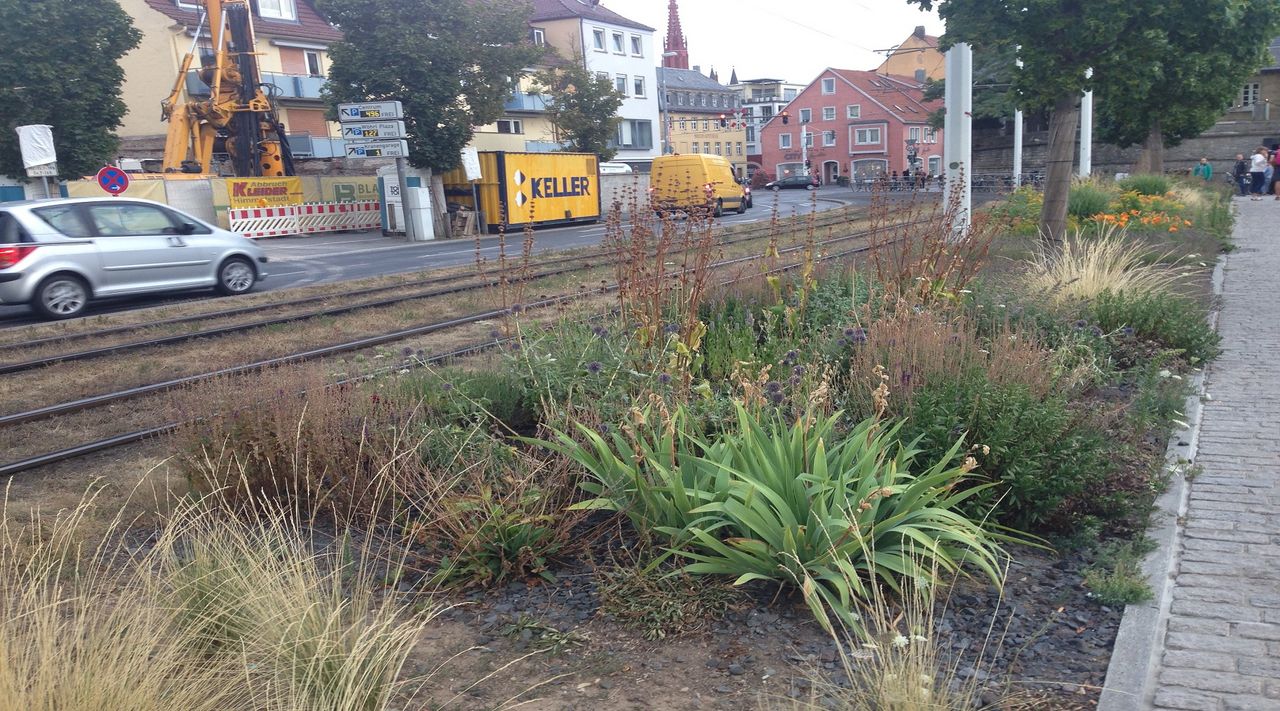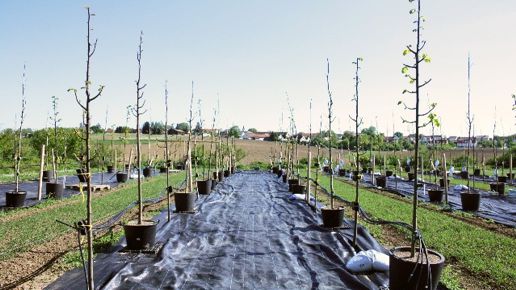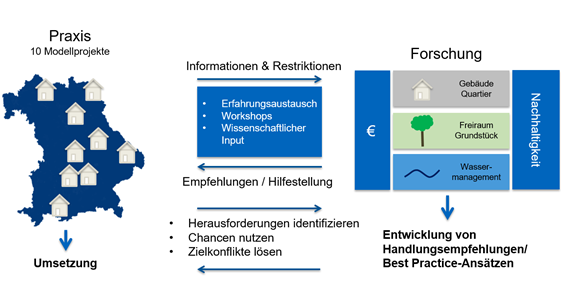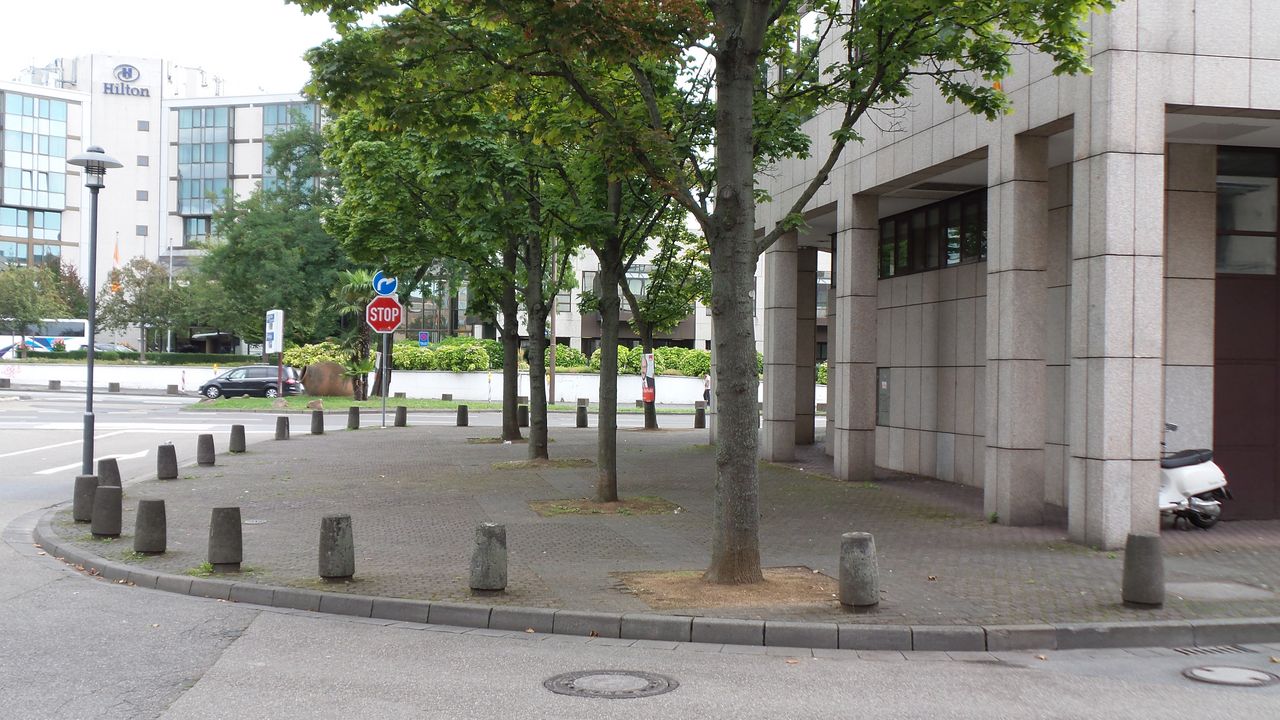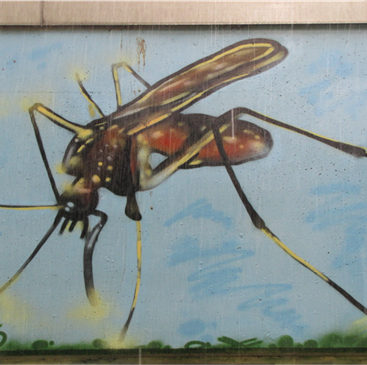Colorful Ribbons for our Cities in Times of Climate Change
The stable growth of many cities and the increasing amount of soil sealing in rural areas change the landscape and the habitats of many animal and plant species. The project therefore studies the biodiversity of urban green, it's esthetic and spatial planning tasks and it's function of climate regulation.
<<more>>
ClimateContainerTrees
The research project aims to close existing knowlege gaps in relation to the climatic effect and growth conditions of trees in containers as well as to properly plant new trees in containers for use as a sustainable urban climatic effective measure.
<< more>>
Accompanying research model project of the experimental building construction "Climate adaptation in building construction"
Climate protection plays an important role in today's building practice, guidelines contribute to the reduction of energy consumption and CO2 emissions of buildings. Climate adaptation, however, is hardly integrated into planning processes. This project is concerned with exploring the interactions and identifying synergies of planning measures to improve the micro- and macro-climate in cities (with buildings, green infrastructures) and strategies for rainwater and greywater harvesting.
<<more>>
Multifunctional infiltration swales in residential areas
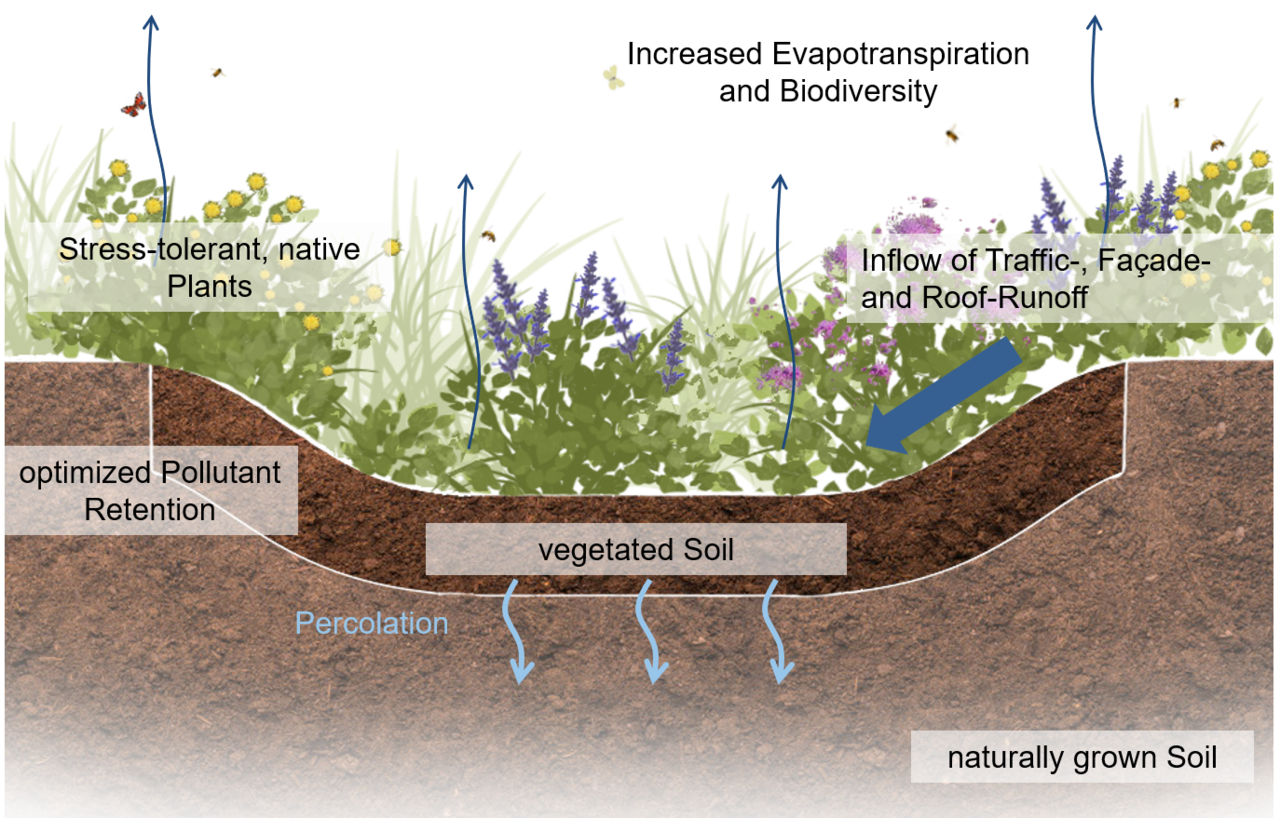
Cities are currently experiencing above-average growth. In metropolitan areas, there is often a lot of redensification, development of new building areas and reduction of inner-city green spaces. Climate change is also increasing the frequency, duration and intensity of extreme weather events. This poses great challenges for stormwater management. Vegetated above-ground infiltration swales are considered promising for the natural management of stormwater runoff in urban areas.
<<more>>
Climate Biomonitoring with Lichens in Bavaria
Lichens are communities of fungi and algae or cyanobacteria that settle on tree bark, rocks or on the ground. Due to their direct contact with the atmosphere, without a protective wax layer as in higher plants, they react extremely sensitively and relatively early to changes in temperature and humidity. With climate change, the diversity of the lichen population is therefore also changing, and several species are classified as climate change indicators.
<<more>>
Interactive guideline "Urban trees under climate change"
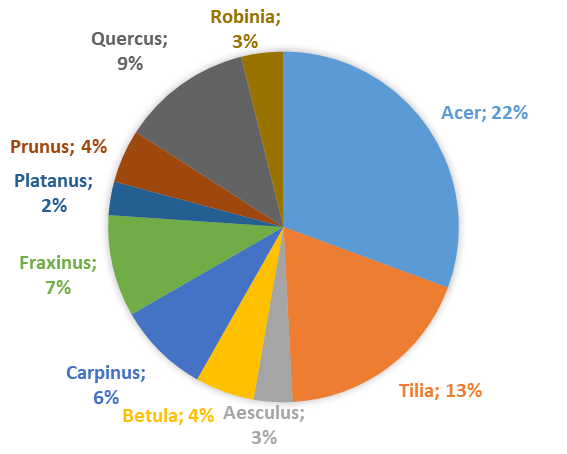
An online simulation module for estimating the growth and ecosystem services of the most common tree species in Bavarian cities.
